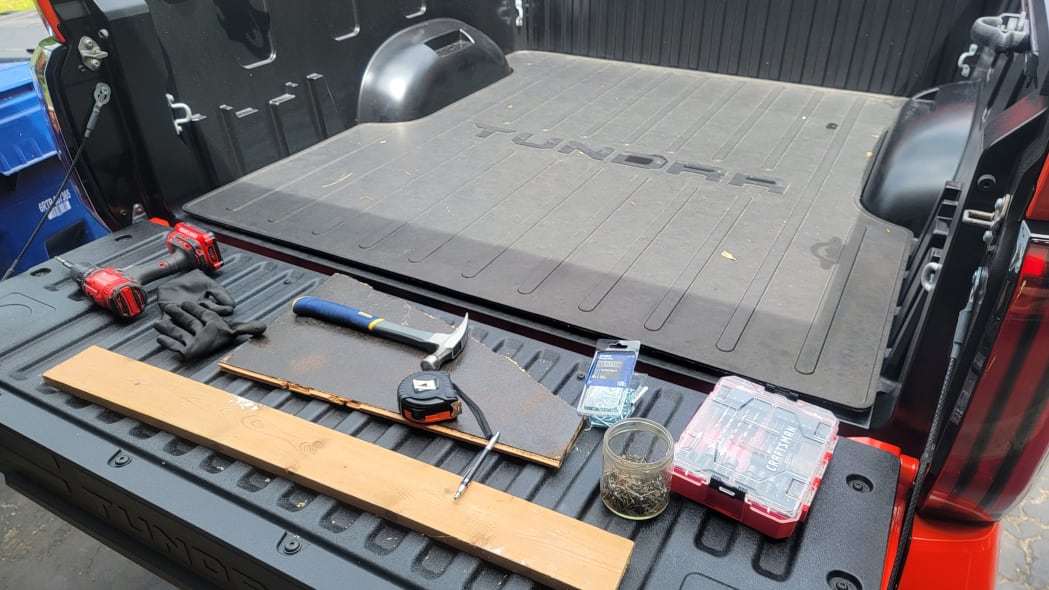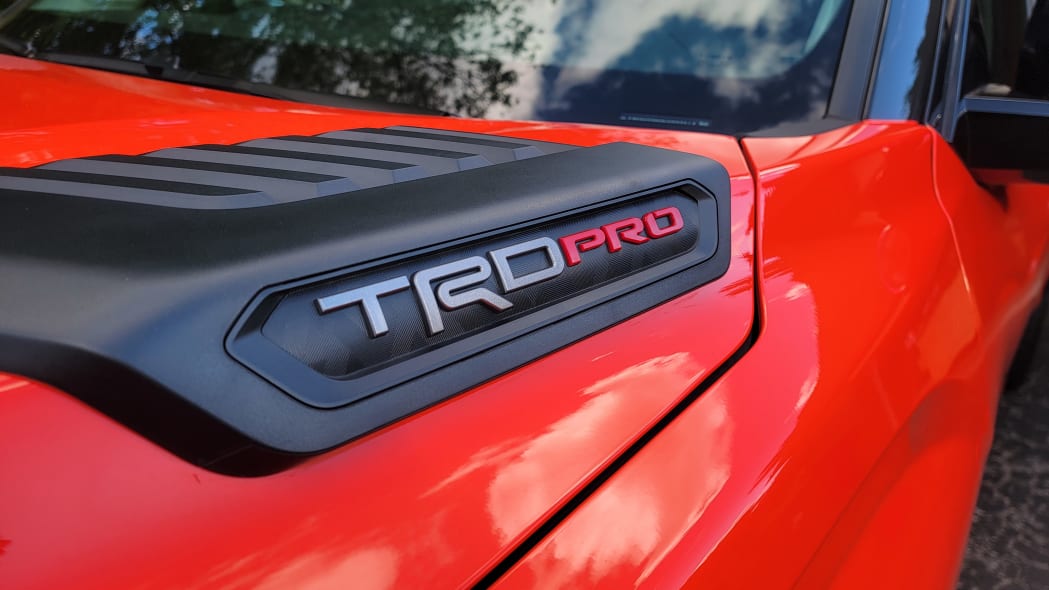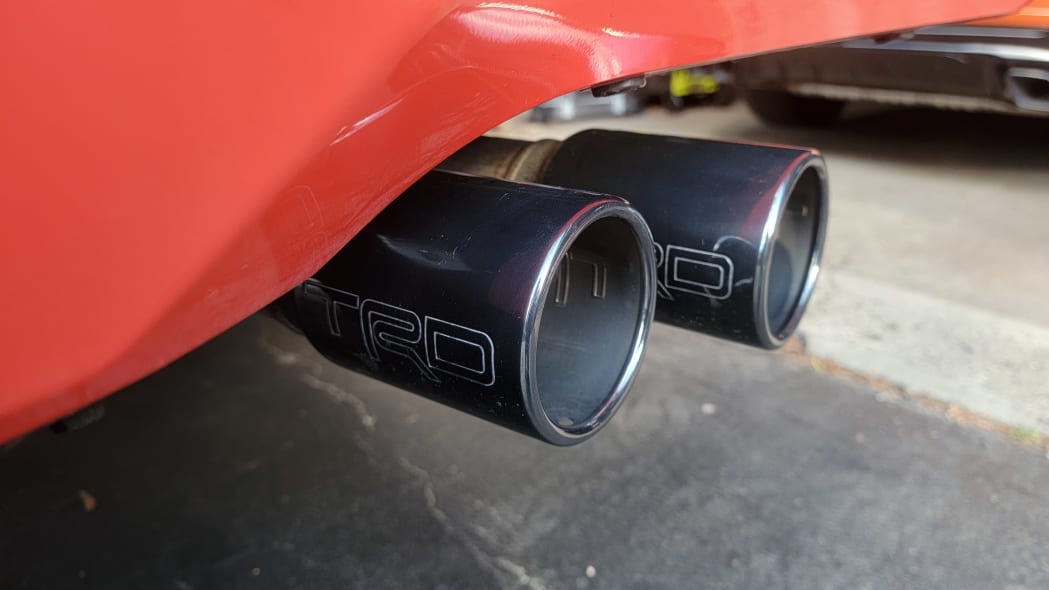2022 Toyota Tundra TRD Pro Road Test: Conspicuous conservatism

HOLLY, Mich. — The redesigned 2023 Toyota Tundra came with several key “first-ever” innovations. A pair of turbocharged six-cylinders replaced the old truck’s V8, a new Capstone trim intends to play in the uber-expensive half-ton space, and an overhauled tech suite makes for a significantly better user experience than before. That’s all well and good, but does it enhance ownership in a meaningful way? To answer that, we spent some time in the TRD Pro – Toyota’s tried-and-true off-road model, which returns packing a new powertrain and some fresh gimmicks.
While the market has trended toward luxurious half-tons and near-six-figure packages (something Toyota’s new Capstone line acknowledges), Toyota settles for just two tiers of off-roadiness: its TRD package (similar to GM’s Z71, Ford’s FX4 and Ram’s cleverly named “Off Road Group”) and this, the TRD Pro, which bakes in all of those goodies (plus a few more). TRD Pro lines up almost perfectly with a Chevy Silverado Trail Boss, GMC Sierra AT4 (no X) or Ford F-150 Tremor. These are all trucks we’d consider mid-tier off-roaders, equipped with locking or limited-slip rear axles and beefed-up suspensions but retaining open front differentials and relying largely on the brakes for most of their electronic trickery.
But, TRD Pro is not merely a package. In fact, it’s the second-most costly Tundra variant offered. Its base price ($69,300) is nearly an entire truck more expensive than a standard Tundra SR ($37,745). Luxury appointments like camo-patterned and perforated leather adorn an interior packed with abundant (and blessedly functional) gadgetry. It’s busy, quite frankly, but at least it matches the exterior. For a complete rundown on trims, pricing and positioning, check out our full 2022 Tundra review.
Like the range-topping Capstone, the TRD Pro is sold exclusively with Toyota’s new i-Force Max hybrid powertrain, which adds 48 horsepower and 184 pound-feet of torque to the already-gutsy turbocharged inline-six. It’s fed by a 1.87 kilowatt-hour battery pack. Total system power comes in at 437 hp and 583 lb-ft — the most in the segment for a gasoline burner not named “TRX” or “Raptor R.” It’s a pleasant, accessible grunt that makes around-town driving uneventful while keeping a bounty in reserve for short merges and highway onramps.

Despite its offroad pretensions, the TRD Pro is plenty composed on the street. The Bilsteins take enough of the edge off that you don’t feel your guts getting jostled over every railroad crossing or pothole, both of which are in abundance in my neck of the woods. Despite its hybrid engine, the TRD Pro’s compulsory 4×4 configuration makes it thirsty. Even with all of its various tricks, consumption never managed better than about 20 mpg even on the freeway. Fellow editor James Riswick did even worse out in California with a Tundra Platinum, averaging 14.7 mpg in almost 500 miles of suburban driving. The EPA says you can expect 19 or 20 mpg combined; your mileage will most certainly vary.
Like any good freeloader journalist, I had plans for my half-ton loaner that included a trip to the local big-box home improvement store. No mulch this time, but an 80-pound air compressor found a home in the bed. The grippy bed mat could have held the compressor in place without the aid of straps, but I brought a set along anyway. Nobody wants to be that guy. With components for my new storage lift blocking access to my garage work bench, I turned to the Tundra as a temporary replacement. Paltry work, as truck things go, but still probably more than many half-ton owners will ever do. Hey, it’s your money.
Still, this seemed a rather insubstantial outing for an off-road pickup. Sure, it can haul basic stuff, but can it haul ass, especially over rough terrain? Toyota apparently heard my thoughts, because days later I was among those invited to Holly Oaks ORV Park for a briefing and off-road excursion in yet another TRD Pro. Fun in the dirt just a short drive away? Yes, please.
It’s appropriate that the last vehicle I’d sampled at Holly Oaks was the Ford F-150 Tremor as the two have very similar off-road equipment, including a rear limited-slip differential and heavy-duty suspension. The Pro has only two real advantages: its standard hybrid powertrain and its bevy of additional luxury equipment. The latter made my recollections of the Tremor seem a bit dreary by comparison but contributed little to the off-road experience. The inherent problem with off-roading a half-ton pickup stems from its size. While a Tundra fits just fine on a farm road or gravel two-lane, honest-to-God off-road trails are far less forgiving. Like Ford, Toyota had to account for this in laying out our route, which avoided many of the technical sections of the park in favor of steep ascents and precarious wall-climbs that highlighted the big truck’s ability to go over small things — the preferred line for something with enormous ground clearance and forgiving overhangs.


What the TRD Pro made most clear was that a good set of cameras (which it has) can make a world of difference when trying to pilot a massive pickup along a tight off-road trail. Ground clearance and approach angle are vital for getting over obstacles, but half-tons tend to have both in spades. Managing a half-ton’s size in a tight spot is therefore the bigger challenge and it becomes much easier when you have a set of eyes at each corner. By this measure, the TRD Pro is no better or worse than its prime competitors, but it’s certainly at least every bit their equal.
This is Toyota’s biggest and baddest off-road pickup. That it lacks equipment found on trucks such as the GMC Sierra AT4X and Ford F-150 Raptor may seem like a shortcoming, but I can’t help but note that Toyota’s restraint may actually be admirable. After all, this is the sole component of the Tundra’s redesign that doesn’t appear to be the result of a full-send mentality. There’s certainly nothing muted about the design nor any modesty in its interior. It feels like Toyota’s choice is its way of silently admonishing us for chasing after outlandish box-checking opportunities that will never see use in the real world.
I am then forced to ask, apart from the look-at-me-aesthetics and a rockin’ IIHS test result, what makes it stand out? In 2022, is merely being the Toyota of pickups enough to guarantee sufficient sales volume? Tacoma would seem to answer that affirmatively, but in the half-ton segment, which appeals to a wider and often wealthier audience, it’s often more about decadence and conspicuity than durability and capability.
The TRD Pro is certainly brash enough to stand out, but its in-your-face style belies disappointingly conservative underpinnings. Where Ford embraced the F-150 hybrid’s electrical architecture by building an entire experience around it (enhanced Pro Power Onboard, whole-home Intelligent Backup Power, etc.), Toyota’s approach feels more forced — a mere acknowledgement of regulatory pressures rather than another opportunity to revolutionize the industry. And this from the company that brought us the Prius.
Related Video



